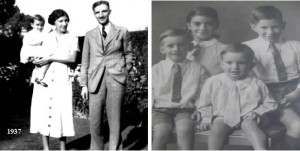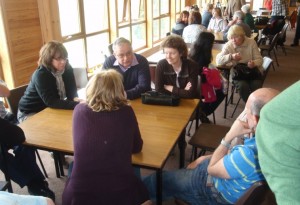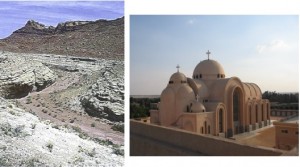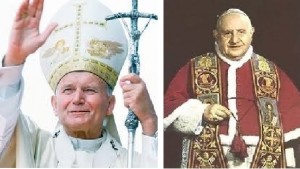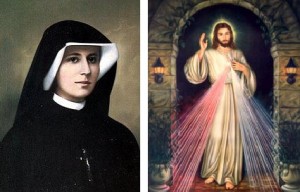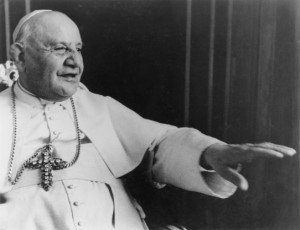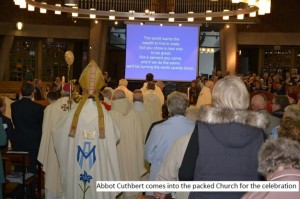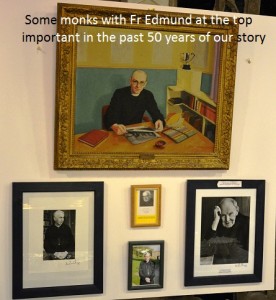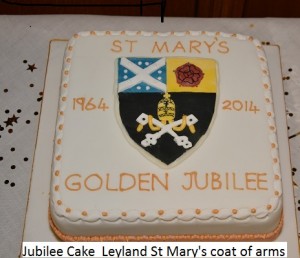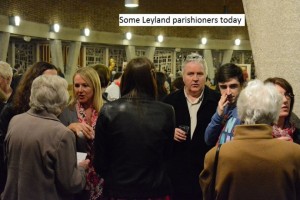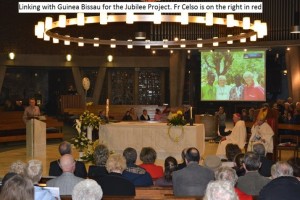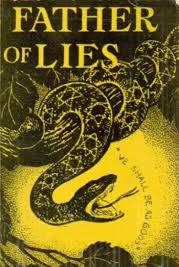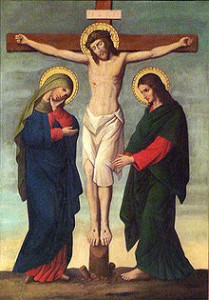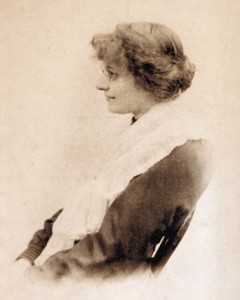Then one day he passed from this world to the next, not just in an ordinary way, but in a way deliberately chosen to bring the fullness of life to each human being. He, risen from the dead, continues to live on in each one of us; more fully if I am baptised and, if I am not baptised but follow my conscience, striving to follow the light that comes to me, then he too will be there with me. The light that comes always contains the relationships I have with my fellows, those near and those far away; if I follow the light, then I can realise that these companions are always to be treated as I would wish others to treat myself. There is the basic, common fundamental light. This does not mean that all of us will have a fulfilled, pain free, happy life, but let us hope that as many as possible will find, somehow, the sense and meaning of what might feel and almost “be” a meaningless existence.
As I was writing this blog a priest friend of mine told me about Nancy. He has met Nancy, and her family. It might be good to pray for her and her family, especially if you take time to read about her. A few lines below you will find a reference to her blog. It is worth opening up for inspiration, and to help us to be grateful to God, for the many good things we enjoy and take for granted. She is only strong enough to write anything on her blog from time to time because of her constant pain.
Jesus’ saying: “I am the Way, the Truth and the Life”, throws light on to these three nouns in regards the journey that each one of us makes over the years we live. Jesus is the Word of God who became flesh; he is the Word of God through whom all things were made, especially the highest point of material creation, the human being.
Nancy who suffers from EDS (see reference to her blog below)
(This is the only picture available of Nancy. It takes her so long to make herself up because of the pain she suffers she has no other photos of herself.)
In regards to the “Life”, yes Jesus is the Life. How is that possible and what does it mean? There are as many meanings as there are people for Life is only truly understood by us, the human beings of this world who can reflect on it, and see a meaning. Human beings have the most varied lives externally. To take only one factor: health. Some seem to sail through life in good health for most of it, and then perhaps in old age fragility sets in. Others suffer bad health, chronic bad health, like Nancy’s who is a chronic EDS sufferer. (Ehlers-Danlos Syndrome leads Nancy to be in constant pain.)
To learn more about Nancy go to http://chronicteenagetears.blogspot.co.uk
On Nancy’s latest blog April 2014
For sure each one of us is meant to live life to the full and have as enriching a life as possible. Each of us follows their own way, unique to that particular person, there is no standard “Way” that is the one to follow. There are as many “Ways” as there are human beings. Jesus relates to each of us – each human being who has ever lived, each one who is living and each one who will live.
On Nancy’s blog March 2014
In regards to the “Truth”, the fact is that Jesus tells us the “Truth” is himself. It is not then that “Truth” can vary, yet each person lives “Truth” in relation to the person of Jesus. As Jesus is both God and Man, and God is “Love” there must be a link between “Truth” and “Love”. It is no use saying the “Truth” without “Love”. It is no longer true. So for instance when a parent speaks to his or her child as it asks interminable questions the answer may not be the whole “Truth” but said in love it is. “Why does my pet hamster have to die” may be answered in a hundred different ways, and in love and kindness to the child the parent is saying the truth. So “Truth” is never just an abstract, but exists in relation to the person of Jesus who is alive and within each one; and Jesus loves each one, immensely, even you, even me.
Pope Francis spoke almost one year ago when answering questions on the eve of Pentecost 2013 to members of modern movements, associations and groups of the Church. A young person asked:
“What do you consider Holy Father, the most important target on which all of us must set our sights if we are to be able to carry out the task to which we are called?”
“I shall answer with just three words: Jesus, Prayer and witness.”
The first: Jesus. What is the most important thing? Jesus. If we forge ahead with our own arrangements, with other things, with beautiful things but without Jesus we make no headway, it does not work. Jesus is more important. What is important is our encounter with Jesus, our encounter with him, and this is what gives you faith because he is the one who gives it to you!
For the full text go to:
http://www.vatican.va/holy_father/francesco/speeches/2013/may/
documents/papa-francesco_20130518_veglia-pentecoste_en.html
Father Jonathan



